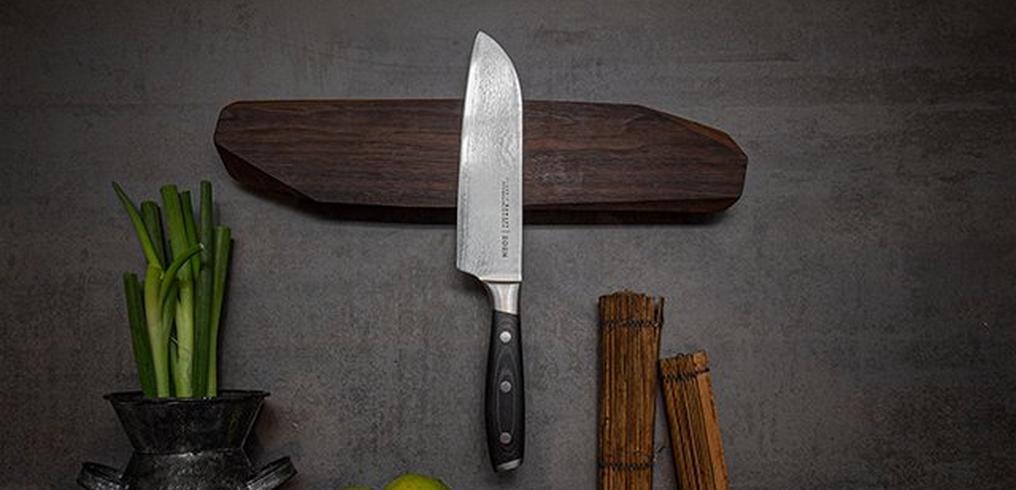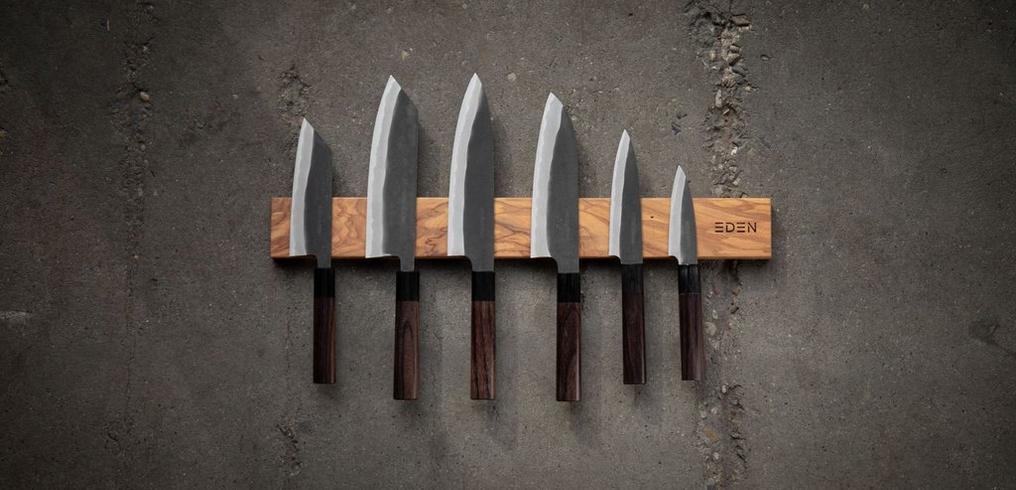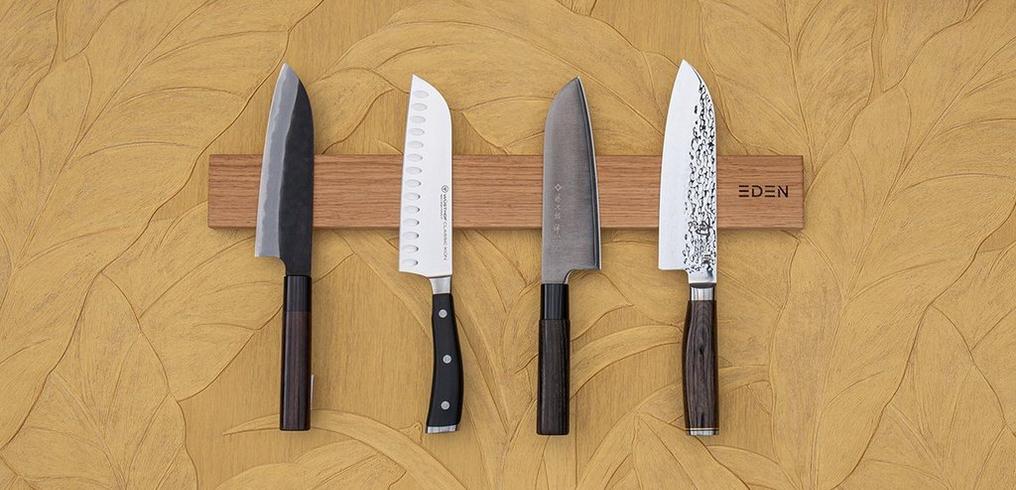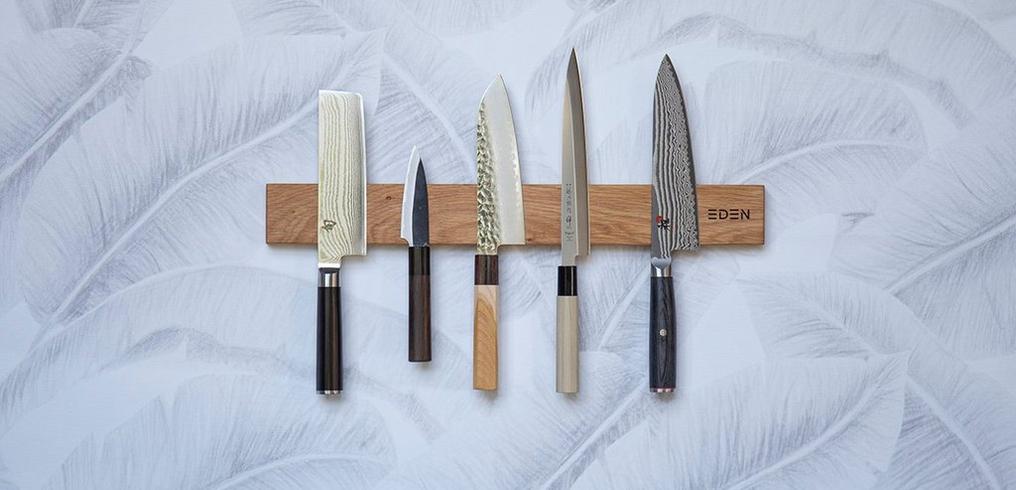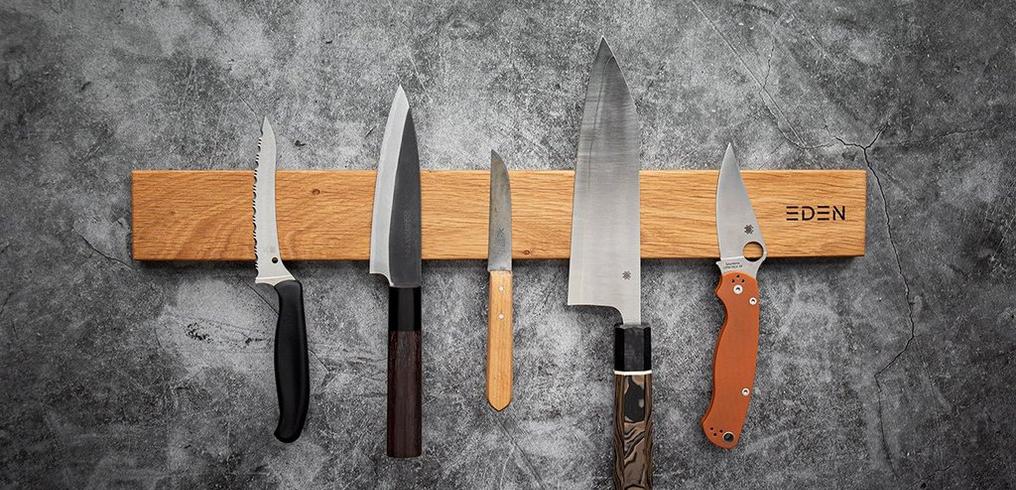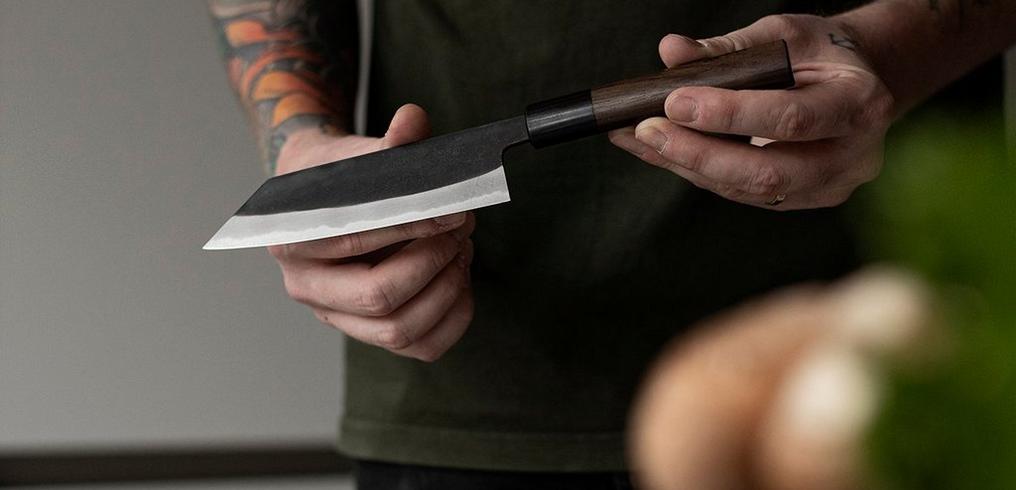Use and maintenance of Japanese kitchen knives
A Japanese kitchen knife guarantees exceptional cutting pleasure. Japan has a ‘knife-culture’ and they have been forging quality knives for over thousands of years. These knives do, however, need some extra TLC. When you treat the knife well, this will be a great addition to your kitchen.
Characteristics of your Japanese kitchen knife
A Japanese kitchen knife is characterized by the high hardness of the blade. This makes it possible to sharpen very thinly which benefits the cutting properties. This creates a ridiculously sharp edge. Often, non-stainless carbon steel is used for these knives. It can be sharpened to an even better result than a stainless steel blade. These features make a Japanese kitchen knife unique.
Things to watch out for:
Using Japanese kitchen knives does require some attention. The high hardness and thinned-out blade increase the risk of damage when not using the knife properly. That is why it is important to pay attention to the following points:
Correct use
- Use the right knife for the right job. Chopping is done with a chopping knife, boning with a boning knife and you cut meat with a carving knife.
- Avoid lateral movement with the knife. Also prying, wedging or chopping are absolutely out of the question with a Japanese kitchen knife. This will definitely damage the edge of the blade. The knife is simply not built for this. It is best to only make an up-and-down motion with the knife.
- Avoid bones, grates, frozen food and hard seeds. It would be best to use a chopping knife or boning knife for this. If you don’t, your blade will get dull really fast and small parts can even break off of the edge. This is called chipping. Great waste of such a beautiful knife!
- When you need a lot of force during cutting, something is going wrong. Japanese kitchen knife should smoothly go through something you are trying to cut. When you have to apply a lot of pressure, choose for a different knife or check the product. This would be better for the knife and for your own safety.
- Always use a plastic or wooden cutting board. Marble and glass are easy to wash, but do damage the edge of the knife. A good rule of thumb is: when your knife does not scratch the cutting board, the board itself is too hard for the knife. So never use a glass or marble cutting board.
Washing-up
-
Wash and dry the blade immediately after use. Knives with carbon steel core (e.g. Blue Paper Aogami-steel) are very prone to rust. Don’t wait with washing until after the meal, but wash immediately after using the knife. Also don’t forget to dry it off!
-
Always wash your Japanese kitchen knife by hand. The knife can handle water, but dishwasher detergent can seriously harm the knife. Not cool!
Storage
- Store your knife safely. When the knife lies in a drawer it can get damaged by getting in contact with other steel objects. This will affect the sharpness of the blade. Always use a blade guard or, even better, a good magnet or knife block.
Inform others
- Inform other people who might use your knife. Where you know what kind of care your knife needs, perhaps other people living with you do not. Tell everyone that uses the knives what kind of special care they need to stay in mint condition. Also tell them how sharp the knives are. This can save you a trip to the emergency room!
Knife maintenance
So you wash your knife properly, use it sensibly and store it safely. We can establish you are on the right track then! Now it's time to talk maintenance. Just like a car, your knife needs maintenance. It is a lot less complicated than you would imagine.
Sharpening
No matter how careful you cut, there comes a time when your knife needs sharpening. With a dull blade you automatically apply more pressure, which increases the risk of accidents. It is therefore wise to keep your knives sharp. It also makes cutting products much easier. In terms of sharpening it is wise not to wait until the last moment. It's easier maintain a reasonably sharp edge then to get a dull blade sharp again. We have all the necessary information about sharpening on our website. It is easy to do yourself, but if you don’t feel comfortable to do this we advise to go to a professional sharpener.
For daily maintenance we recommend a ceramic sharpening rod. A sharpening steel often does little on such a hard type of steel and does not remove any material. A sharpening rod actually sharpens your knife.
Maintaining the handle
A wooden handle is often treated with wax or oil. After a few months of use it is advised to treat it with some extra oil. We recommend Robert Herder maintenance oil for wooden handles, Ballistol or some other mineral oil. When you use olive oil it can become a bit rank after a while.

